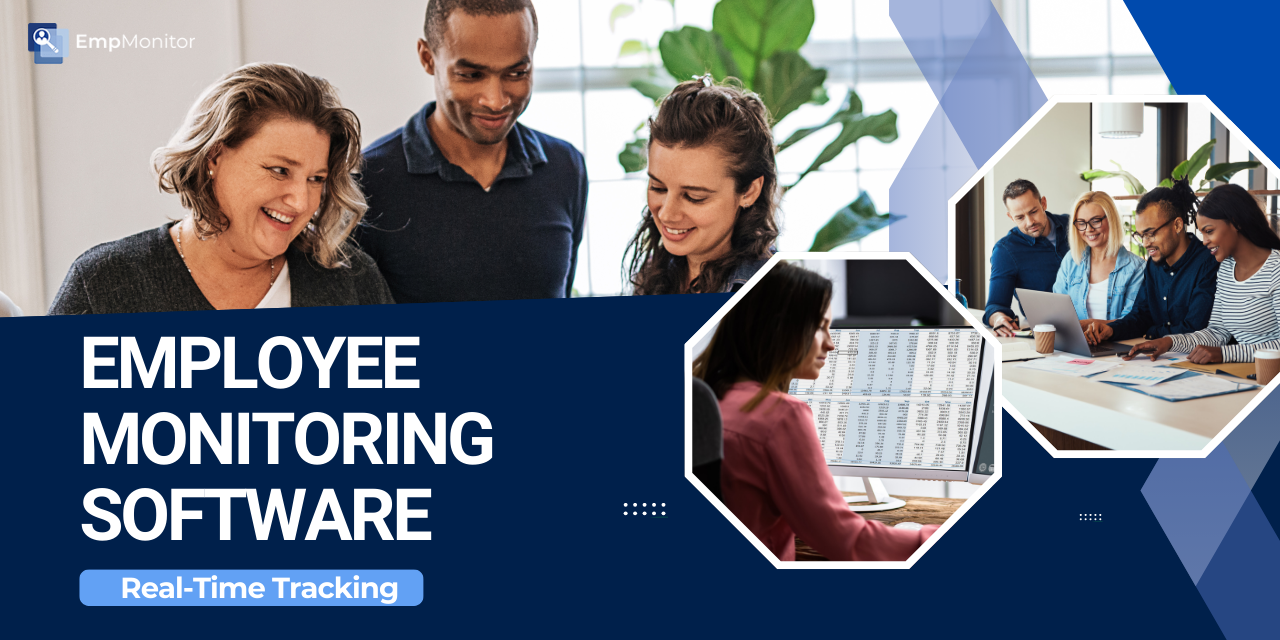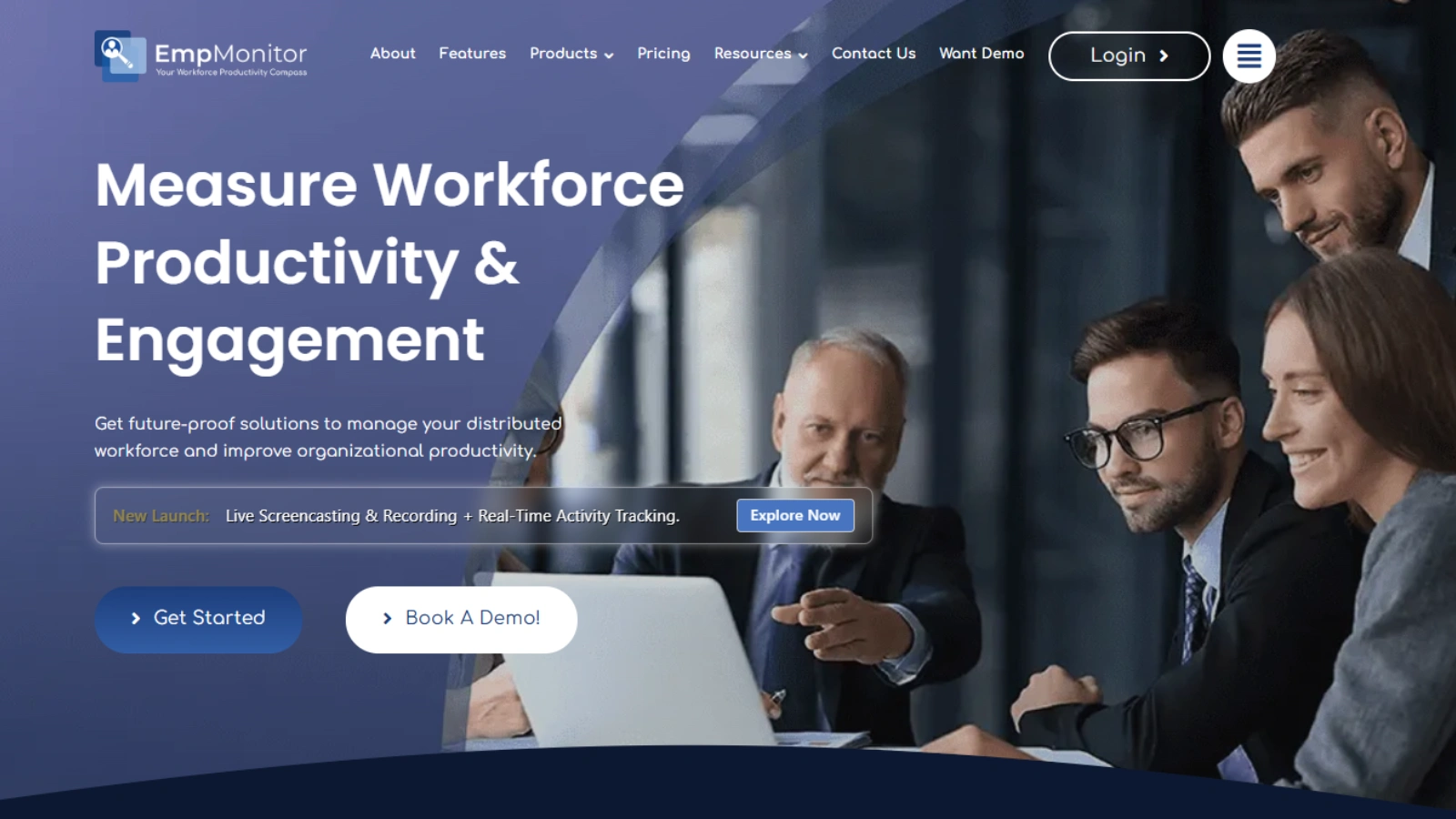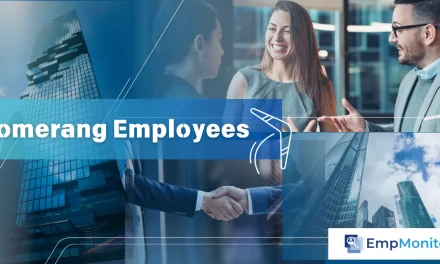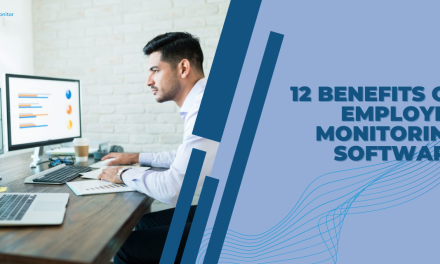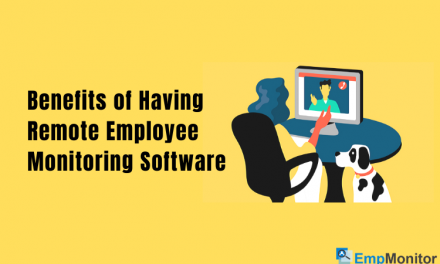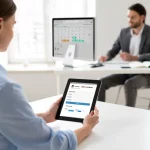Hybrid schedules, distributed teams, and rising security risks have made visibility a leadership priority. You can’t fix what you can’t see, yet you also can’t afford to break trust. That’s why modern employee monitoring software has evolved beyond basic screenshots into ethical, insight‑driven visibility that improves productivity without micromanagement. In this guide, we’ll unpack how employee monitoring software with real-time activity tracking works, what to look for, and why thousands of teams choose employee monitoring softwares to balance performance, privacy, and compliance.
In a hurry? Listen to the blog instead!
Why Businesses Need An Employee Monitoring Software In 2025?
The modern stack is scattered: tabs, tools, chat pings, and shifting contexts. For leaders, the questions are constant: Where is time going? Which processes slow us down? How do we protect data while enabling remote flexibility? The answer for many is employee monitoring software for remote workforce management, so they can:
- Prove productivity with objective data rather than gut feel.
- Spot bottlenecks early (e.g., excessive context switching, manual steps, or meetings that drain focus).
- Standardize compliance for regulated workflows and client SLAs.
- Coach fairly using consistent metrics across locations and time zones.
Types of Employee Monitoring
Different teams need different lenses. Here are the common approaches and when to use them.
1) Activity Analytics (Always‑On Insight)
Tracks app/URL usage, document titles, and activity/idle time. Great for trend analysis and coaching without being intrusive.
2) Real‑Time Oversight (When Seconds Matter)
Employee monitoring software with live screen recording and employee monitoring software with live screencasting lets authorized managers view a session in real time (with consent and policy controls). Ideal for support teams, training moments, and urgent troubleshooting.
3) Evidence & Audit Trails
Screenshots at defined intervals, project logs, and policy alerts create a defensible history for client audits and security reviews.
4) Cloud for SMBs
A cloud employee monitoring software for small businesses removes server headaches, deploys quickly, scales easily, and manages everything from a browser.
How It Works: Under the Hood
A lightweight agent runs on company devices (Windows/macOS/Linux). It:
- Collects metadata (apps, URLs, titles, activity/idle status) and, if enabled, captures screens or streams live views.
- Sends encrypted data to the cloud.
- Aggregates results into dashboards, productivity reports, and alerts.
- Applies role‑based access so only approved stakeholders view sensitive information.
This architecture supports employee monitoring software with real-time activity tracking while allowing granular controls; per team, per schedule, and per policy.
Key Features To Prioritize (And Why They Matter)
1) Real‑Time Activity Tracking — Your Single Source of Work Truth
If you only perfect one capability, make it this one. Real‑time visibility shows what’s happening right now: which apps are in use, which tasks are active, and whether a device is idle. Managers can:
- Intervene during live incidents (e.g., a secure app left open or a time‑sensitive task stuck).
- Offer in‑the‑moment coaching (“Let’s walk through that workflow together”).
- Protect SLAs with instant escalation paths.
Pro tip: Pair real‑time insight with humane policies—visible indicators, scheduled monitoring windows, and opt‑in for sensitive roles. That’s how you get buy‑in.
2) Live Screen Recording & Screencasting
Sometimes you need to see the work to help. With employee monitoring software with live screen recording and employee monitoring software with live screencasting, supervisors can request one‑time or time‑boxed views for training, QA, and incident response, always governed by consent and logs.
3) Productivity Reports & Focus Analytics
Look for the best employee monitoring software with productivity reports that:
- Segment by app category (productive, neutral, unproductive) you define
- Track focus time vs. context switching
- Show trends by person, team, project, and client
- Export to CSV/BI tools for deeper analysis
These insights transform one‑off screenshots into continuous improvement programs. If you want the best employee monitoring software for productivity insights, check that reports are customizable and coach‑friendly (not just “gotcha” logs).
4) Time, Attendance & Timesheets
Automated clock‑ins/outs, shift rules, and timesheets tied to projects eliminate guesswork and time theft while making payroll smoother.
5) Real‑Time Alerts & Automation
Policy‑based alerts (e.g., risky websites, extended idle time, or data transfer events) let you act before a small issue becomes a major one.
6) Cloud Management for SMB Agility
For fast‑moving teams, cloud employee monitoring software for small businesses is a must. No servers, no maintenance, just secure access from any browser.
7) Security, Privacy & Role‑Based Access
Ensure encryption in transit/at rest, granular permissions, consent records, and data retention controls. Trust is a feature.
Benefits You’ll Actually Feel
Employee monitoring software isn’t just about oversight, it’s about creating a smarter, fairer, and more productive workplace. Here’s how it helps:
- Measurable productivity gains
With fewer distractions and clear visibility, your team spends more time on deep work that actually moves projects forward. - Cleaner processes
Real-time data highlights redundant steps and bottlenecks, making it easier to streamline workflows and automate routine tasks. - Fair performance reviews
Objective tracking ensures evaluations are based on actual results, reducing bias and helping employees feel recognized for their effort. - Better client trust
Audit-ready logs and transparent reporting foster confidence, making it easier to deliver consistent results and build lasting client relationships. - Happier teams
Clarity around expectations plus data-driven coaching creates a positive environment—replacing vague pressure with actionable guidance.
Read More: –
What Is Employee Monitoring Software: Its Uses & Importance Explained
Remote Employee Monitoring Software | List Of 21 Best Tools
Potential Drawbacks (and How to Mitigate Them)
Privacy perception: Over‑monitoring erodes trust. Publish a plain‑English policy, display active monitoring indicators, and exclude personal time.
Stress & anxiety: Use data for coaching and workflow design—not punitive stack‑ranking.
Legal & compliance: Obtain consent where required, retain only necessary data, and document your lawful basis.
Change resistance: Start with pilots, share wins transparently, and invite feedback.
How To Choose The Right Platform?
Use this checklist before you decide the right employee monitoring software:
- Fit for your model (remote, hybrid, on‑site)
- Real‑time activity with configurable rules
- Live help options (recording/screencasting) with consent and audit trails
- Rich analytics—the best employee monitoring software for productivity insights will let you define what “productive” means in your context
- Cloud simplicity for SMBs
- Integrations (project, payroll, IAM)
- Security & privacy defaults you’re proud to defend
- Value—choose an affordable employee monitoring software with real-time tracking that scales as you grow
Real‑World Use Cases
- Customer Support: Live screencasting accelerates coaching; alerts flag risky actions in ticket tools.
- Agencies & Studios: Productivity reports reveal focus windows; leaders batch meetings around them.
- Finance & Legal Ops: Audit trails and access rules protect sensitive data while enabling remote work.
- IT & Dev Teams: Real‑time visibility helps leads spot blockers and remove friction quickly.
Why Teams Should Go For EmpMonitor?
Modern teams need more than just productivity checks, they need clarity, accountability, and tools that foster collaboration without creating mistrust. Employee monitoring software has become an essential part of this balance, helping organizations ensure efficiency while respecting employee privacy.
EmpMonitor fits into this space by offering features that align with what teams actually need, rather than overwhelming them with unnecessary controls.
-
True Real-Time Activity Tracking
Configurable monitoring windows, role-based visibility, and clean dashboards. If your mandate is clarity without creepiness, this checks the box for employee monitoring software with real-time activity tracking.
-
Live Enablement & Consent-Based Visibility
Covers employee monitoring software with live screen recording and live screencasting for training and urgent fixes, while keeping consent in focus.
-
Deep Productivity Analytics
Categorize apps/sites, track focus time, and ship board-ready insights. Exactly what teams expect from the best employee monitoring software with productivity reports and productivity insights.
-
Remote-Ready Controls
Built to manage distributed teams, making it a strong fit as employee monitoring software for remote workforce across time zones.
-
Cloud Convenience for SMBs
Fast deployment, easy admin, and lightweight setup, ideal as cloud employee monitoring software for small businesses.
-
Budget-Friendly Scale
Transparent tiers and value-based packaging make it an affordable employee monitoring software with real-time tracking.
EmpMonitor’s philosophy is simple: visibility that empowers, insightful when you need it, respectful when you don’t.
Implementation Roadmap (30/60/90 Days)
Day 0–30: Foundations
- Map policies: what’s monitored, when, and why. Put it in plain language.
- Configure roles and permissions; enable indicators so employees know when monitoring is active.
- Start with one or two pilot teams; enable real-time activity tracking and basic reports.
- Share early wins (e.g., recovered focus hours, smoother handoffs) to build momentum.
Day 31–60: Expansion
- Roll out to more teams; turn on live screencasting selectively for coaching.
- Customize productivity categories and targets per team.
- Automate alerts for clear, low‑friction guardrails.
Day 61–90: Optimization
- Connect reports to performance and workforce planning.
- Iterate on categories and dashboards; prune any signal that creates noise.
- Conduct a privacy & compliance review; adjust retention windows.
Future Trends In Employee Monitoring Software
Employee monitoring is no longer just about tracking what happened—it’s evolving into predictive, preventive, and supportive systems. Looking ahead, here are some of the most promising trends:
- AI-Powered Insights: Instead of simply logging activity, AI tools can surface patterns that humans might miss. For example, detecting early burnout signs through erratic work patterns or excessive overtime hours, and recommending adjustments before productivity dips.
- Integration with Collaboration Platforms: Modern teams live in Slack, Teams, Jira, Asana, and Zoom. The best employee monitoring software with real-time activity tracking will sync seamlessly with these platforms, enriching insights without adding manual work.
- Predictive Productivity Models: By analyzing historical performance and project data, monitoring platforms can forecast delivery risks or bottlenecks, helping managers allocate resources proactively.
- Ethical AI & Transparency by Design: As AI makes monitoring smarter, businesses will need stronger safeguards to avoid bias and ensure transparency. Expect future tools to ship with built-in explainability and “employee view modes” where team members can see the same data managers do.
Compliance, Privacy, and Global Legal Considerations
No discussion of monitoring is complete without acknowledging the legal landscape. Depending on where your company and employees operate, different frameworks apply:
- GDPR (Europe): Requires explicit consent, data minimization, and the right to access or erase personal data. Companies must clearly state the purpose of monitoring and ensure proportionality.
- CCPA (California, USA): Grants employees rights to know what data is collected, why, and to request deletion. Transparency in privacy notices is non-negotiable.
- Local Labor Laws: Many countries, such as Germany, Brazil, and India, have their own employee privacy protections. In some regions, works councils or unions must approve monitoring practices.
To stay compliant:
- Draft a clear monitoring policy, reviewed by legal counsel.
- Train managers to use data responsibly.
- Retain only the data you need, and purge it when no longer relevant.
- Offer transparency portals so employees know exactly what is being tracked.
When handled properly, monitoring strengthens—not weakens—trust.
Best Practices For Successful Adoption
Rolling out employee monitoring software with real-time activity tracking requires more than installation. Here are practical steps that separate successful implementations from failed ones:
- Communicate Early and Often: Share the “why” with employees before turning on monitoring. Framing it as a productivity and support tool—not surveillance—makes all the difference.
- Start Small: Begin with one department or team, gather feedback, and iterate. This reduces resistance and builds internal champions.
- Involve Employees in Defining Productivity: Let teams help categorize which apps and sites are “productive” vs. “neutral.” This creates buy-in and avoids one-size-fits-all metrics.
- Balance Transparency and Control: Provide dashboards or reports employees can access themselves. When workers see their own focus patterns, they self-optimize without heavy intervention.
- Focus on Coaching, Not Policing: Use data as a conversation starter, not a hammer. Frame feedback around workflows and outcomes, not judgment.
Wrapping Up: Visibility That Empowers
Hybrid and remote work aren’t going away. The businesses that thrive in 2025 and beyond will be those that embrace insight-driven, ethical monitoring—turning visibility into empowerment, not surveillance.
The key takeaways:
- Real-time activity tracking provides actionable clarity.
- Privacy and compliance must be built-in, not bolted on.
- Success comes from transparent communication and coaching, not micromanagement.
If your team is evaluating options, EmpMonitor delivers the balance modern organizations demand: visibility when you need it, respect when you don’t.
FAQs: –
Q1. Is employee monitoring software legal?
Yes, it is legal in most countries if organizations maintain transparency, comply with labor laws, and clearly communicate monitoring policies to employees. Businesses should always provide disclosure and obtain consent where required.
Q2. How does real-time activity tracking work?
Real-time activity tracking captures ongoing actions like application usage, website visits, keystrokes, and task progress. With features like live screen recording or screencasting, managers can view activities as they happen, enabling immediate feedback and corrective actions.
Q3. Will monitoring affect employee morale?
It depends on implementation. Transparent communication, focusing on productivity insights rather than surveillance, and involving employees in the process can foster trust. When positioned as a growth and efficiency tool, it enhances morale rather than reducing it.
Q4. How is EmpMonitor different from other employee monitoring tools?
EmpMonitor offers a robust blend of real-time tracking, live screen recording, productivity reports, and affordable pricing. Unlike generic tools, it scales easily for small businesses and enterprises alike, while ensuring compliance and data security.
Q5. Can monitoring software integrate with other business tools?
Yes. Many employee monitoring platforms, including EmpMonitor, integrate with project management and communication tools. This ensures data flows seamlessly and enhances operational efficiency.

